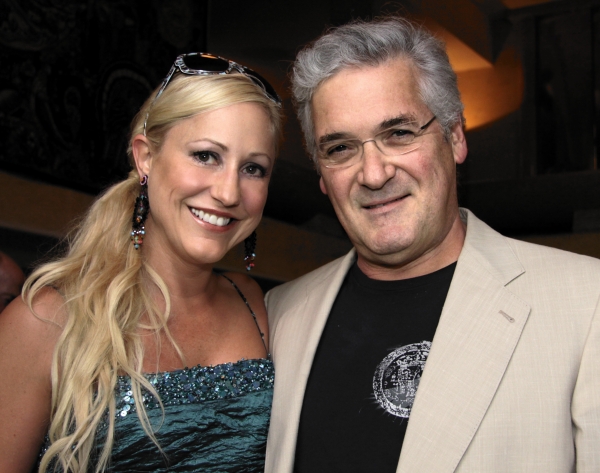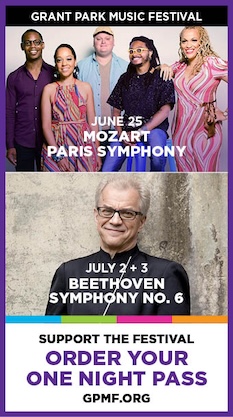Zukerman and Forsyth provide quick immersion in ripe Romanticism

Violinist and conductor Pinchas Zukerman, long a favorite with Ravinia audiences, has come to the festival so often—27 appearances since his debut in 1970—that he’s practically family. For his performances this season he brings two members of his actual family with him. On Thursday night as violinist in a program with the Chicago Symphony Orchestra and Ravinia’s music director James Conlon, he shared the stage with his wife of six years, cellist Amanda Forsyth. And on Friday he appears as violinist and conductor for a CSO concert featuring his daughter, soprano Arianna Zukerman.
Thursday’s concert was a luxurious immersion in Romanticism. The evening opened with Saint-Saens’ ardent La muse et le poete, a work for solo violin, cello and orchestra from 1910. Zukerman was also soloist in Bruch’s Violin Concerto No. 1, and the concert closed with a rousing promenade through Ravel’s orchestration of Mussorgsky’s Pictures at an Exhibition.
The Bruch concerto and Mussorgsky’s Pictures are concert staples, of course, but the less familiar Saint-Saens got the evening off to a soaring start. We might expect the cello, with its darker, more grounded tone, to be the wise Muse in this intimate musical conversation. But Saint-Saens envisioned the violin as the inspirational figure for the cello’s heavy-hearted Poet.
Supported by sympathetic murmurings and emotional surges from the orchestra, violin and cello worked their way through a deeply felt encounter. In his opening solo, Zukerman’s violin floated in above the orchestra, delicate and tentative. In its lowest registers Forsyth’s cello had an ebony, almost sepulchral tone that gave the Poet’s long, brooding melodies breadth as well as depth. Exchanges between violin and cello bristled with spontaneity, sometimes spilling out as rapid-fire conversation. In unison passages, the two voices climbed and plunged with youthful zest. Though unabashedly romantic, the performance carried no trace of hothouse, overly perfumed excess. It was, instead, an intense encounter between two souls grappling with serious questions.
That intensity carried over into the Bruch concerto. In the opening movement, Zukerman’s slow, impassioned solos were full of feeling. The orchestra was highly responsive and brimming with energy throughout the concerto, and Conlon drew warm, vibrant color from the strings. Zukerman seemed less engaged in the final movement. His virtuoso fireworks were as impressive as ever, but he seemed to be rushing ahead of the orchestra.
At times the orchestra also sounded like it was operating on automatic pilot in Pictures at an Exhibition. But the opening Promenade was brisk and lithe, and the final portrait, of The Great Gate of Kiev, sparkled with joy and color.
_________
On Thursday, Ravinia revealed some plans for 2011, which will mark the festival’s 75th anniversary as the CSO’s summer home. Conlon and the orchestra will wrap up their multi-season Mahler cycle with the song-cycle Das klagende Lied. The summer’s concert opera will be Tosca with Patricia Racette, Salvatore Licitra and Bryn Terfel. And young composer Nico Muhly will write a new work for the piano-playing siblings, the 5 Browns.
Posted in Uncategorized

